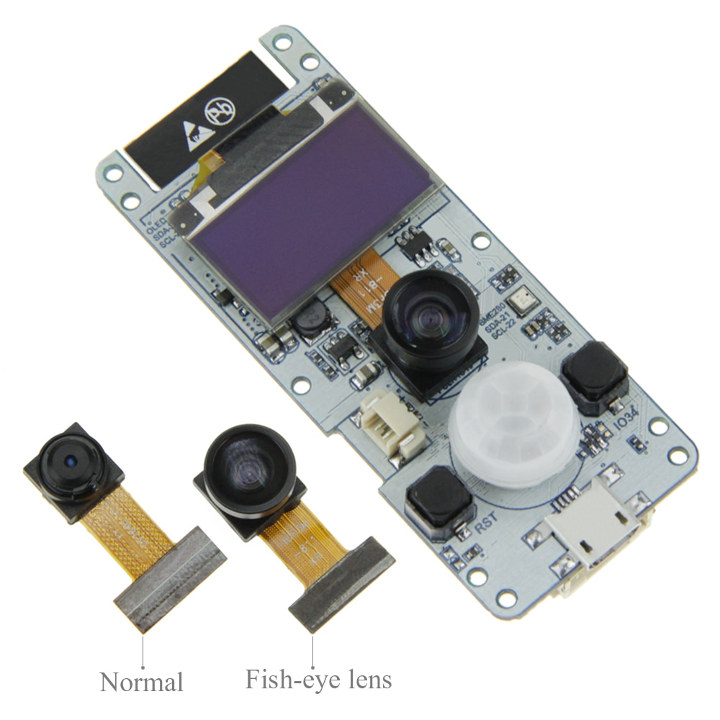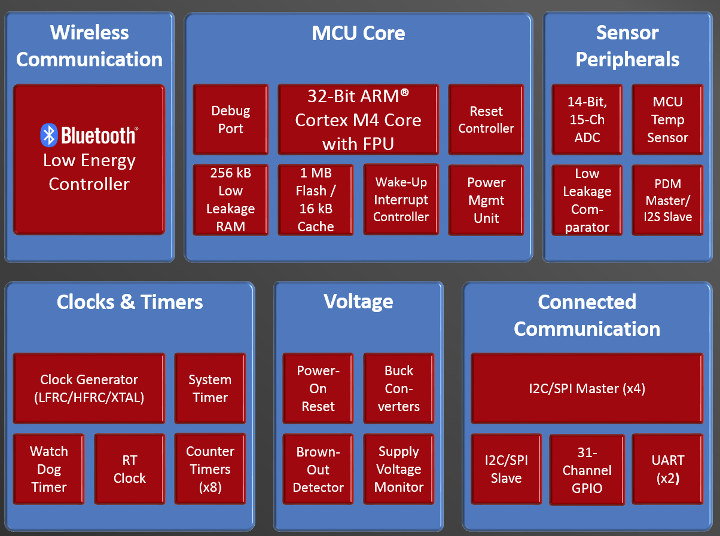Novasom Industries is an international company specializing in SBCs (Single Board Computers) with offices in Romania and the US. Most of their products are based on Arm and Intel processors, and they have two product lines their U-Line for low power IoT devices, and M-Line for applications requiring multimedia processing with various Rockchip, Qualcomm, and Intel processors. One model in the U-Line caught my attention, as beside an NXP i.MX6ULL SBC, the company is also offering an industrial temperature grade ESP32 SBC named SBC-U1 / SBC-U1A. SBC-U1/SBC-U1A board specifications: SoC – Espressif Systems ESP32 dual core Tensilica LX6 processor @ 240 MHz, 384KB RAM Storage – 4MB flash, micro SD card slot up to 32GB Connectivity – 802.11 b/n/g WiFi 4, Bluetooth 4.1 LE I/Os – 24-pin 2.54mm pitch header with up to 15 GPIO @ 3.3V, I2C, SPI, 2-ch 12-bit ADC, 2-ch 10-bit DAC, 2x protected inputs up to […]
Minnow Server is a Secure Web Server for Microcontrollers
Many embedded systems have a limited amount of memory, which would normally run programs with smaller footprints than on desktops or servers. For example, nginx and Apache2 are the common web servers, but on hardware with limited memory, smaller footprint web servers may be required, so that’s why I wrote a list of web servers for embedded systems running Linux/uClinux many years ago. But now, even platforms based on microcontrollers often need to run web server usually for configuration. We’ve already shown how to use Arduino to serve a simple web page and did the same in Getting Started with NodeMCU Board Powered by ESP8266 WiSoC but using Lua programming language instead. It may be more convenient to run a proper web server however, as it’s easier to change the interface, and we previously covered MicroWebSrv lightweight web server that works on platforms running MicroPython such as Pycom boards. Real Time […]
TTGO T-Camera ESP32 Camera Board Comes with OLED Display, Sensors
ESP32 is now being used for AI workloads such as face detection with camera boards like ESP32-CAM, or the upcoming ESP-EYE board from Espressif Systems themselves, combined with ESP-WHO face detection and recognition framework. The two aforementioned board require you to use a phone to vizualize the results, unless you blink some LEDs or connect your own display. But the just released TTGO T-Camera board includes a 128×64 OLED display which should allow you to display face detection and/or recognition results, as well as a BME280 environmental sensor, a PIR sensor, and an optional fisheye lens. TTGO T-Camera board specifications: ESP32-WROVER-B Wireless Module SoC – ESP32 dual core Tensilica LX6 processor Memory – 8MB PSRAM Storage – 4MB SPI flash Connectivity – 2.4 GHz 802.11n WiFi 4, Bluetooth 4.2 LE Camera – 2MP OV2640 camera with normal or fisheye lens Display – 0.96″ 128×64 OLED display connected via SSD1306 I2C […]
Ambiq Apollo2 Blue Ultra Low Power MCU adds Bluetooth Connectivity
Ambiq Micro unveiled their ultra-low power Apollo MCU back in 2015 with claims of Cortex-M4 performance at Cortex-M0+ energy efficiency by leveraging SPOT (Subthreshold Power Optimized Technology) technology that allows operating the microcontroller at very low voltages (less than 0.5V). Since then the company introduced Apollo2 MCU with 10 μA/MHz power consumption, but still a generic purpose microcontroller. Earlier this year, the company unveiled a new version of Apollo2 microcontroller adding Bluetooth connectivity, and allowing Bluetooth applications that last years on a charge. Meet Apollo2 Blue. Apollo2 Blue key features and specifications: Arm Cortex-M4 Processor up to 48 MHz with FPU, MMU, wake-up interrupt controller with 32 interrupts Ultra-low power memory Up to 1 MB of flash memory for code/data Up to 256 KB of low leakage RAM for code/data 16kB 1 or 2-way Associative Cache Bluetooth 5 Low Energy RF sensitivity – -95 dBm TX: 5mA @0 dBm; RX: […]
MAIX Development Boards with Sipeed M1 RISC-V AI Module Launched for $5 and Up (Crowdfunding)
Sipeed M1 (aka MAIX-I)is a compact module based on Kendryte K210 dual core RISC-V processor designed for low power artificial intelligence workloads at the edge, such as face detection, object recognition, or audio processing. The module and some development boards are available on Taobao for the Chinese market, as well as YOYCart for the rest of the world, but the company has now launched several MAIX boards based on M1 module through an Indiegogo campaign with price starting at just $5 a piece. Sipeed MAIX Bit (aka MAIX Micro) is the cheapest one at $5 (early bird) / $6 with the following specifications: SoC – Kendryte K210 dual core 64-bit RISC-V processor @ 400 MHz (overclockable up to 800 MHz) with KPU CNN hardware accelerator APU audio hardware accelerator with support for up to 8 mics, up to 192 KHz sample rate FPIOA (Field Programmable IO Array) mapping 255 functions to […]
$50 Kendryte KD233 Board Features K210 Dual Core RISC-V SoC
RISC-V is talked about a lot, and we’re started to see a few development boards coming to market, or at least being announced with some based on SiFive processors such as HiFive Unleashed or Arduino Cinque, as well as other like GAPUINO GAP8 for low power A.I. applications. The Arduino board is not for sale yet, and HiFive Unleashed and GAPUINO GAP8 are fairly expensive at $999 and $229. Kendryte KD233 board is another RISC-V development board, based on Kendryte K210 dual core 64-bit RISC-V processor designed for machine vision and “machine hearing”. The board goes for $49.99 on AnalogLamb. Kendryte KD233 board specifications: SoC – Kendryte K210 dual core 64-bit RISC-V processor, KPU Convolutional Neural Network (CNN) hardware accelerator, APU audio hardware accelerator, 6MiB of on-chip general-purpose SRAM memory and 2MiB of on-chip AI SRAM memory, AXI ROM to load user program from SPI flash Storage – 128 Mbit […]
VisionSOM-RT is an Industrial System-on-Module based on NXP i.MX RT Arm Cortex-M7 Processor
It’s hard to keep up with all the systems-on-module based on Arm Cortex-A “application class” processors, but so far I can’t remember seeing any Arm Cortex-M “microcontroller class” SoM. However, SoMLabs is currently working on VisionSOM-RT, a system-on-module based on NXP i.MX RT 1050 Arm Cortex-M7 processor clocked at 600 MHz. NXP i.MX RT series processors are actually promoted as a “crossover” processor delivering application processor performance with real-time capabilities right at the edge between the two classes of processors. VisionSOM-RT (SLS12Rx) module preliminary specifications: SoC- NXP i.MX RT Arm Cortex-M7 processor @ up to 600MHz with NXP PXP 2D graphics accelerator, and Graphics Engine PXP PiXel processing pipeline for imagine resize, rotation, overlay and color space conversion. Memory – 512kB on-chip RAM memory, up to 32MB SDRAM Storage – Up to 16MB QuadSPI flash, optional 4GB eMMC flash 200-pin SO-DIMM edge connector with Display Interface – 8/16/24-bit Parallel RGB […]
Hexabitz Modular Prototyping Platform Enables Wire-Free 3D Electronics Designs (Crowdfunding)
A few years ago, I made a Raspberry Pi case made of perfboard and created some sort of DIY modular 3D electronics design by using the top and sides of the case to also hold electronics components and associated circuitry like a relay, and LEDs. The just launched Hexabitz hexagonal / pentagonal modules are designed to make prototyping easier, and also provide flexibility to create all sort of wire-free (3D) electronics designs with minimal soldering. A little over a dozen of modules are currently on offer, most with an STM32F0 Arm Cortex M0 micro-controller: Modules with built-in MCU 01R00, P01R00 – RGB LED (hexagon / pentagon) with Cree Tri-color (RGB) SMD LED, 4-Pin PLCC H02R10 – Bluetooth/BLE V4 based on Laird BT900-SA + chip antenna, +8 dBm max H04R00 – Audio amplifier, speaker, and headphone jack based on ST TS4990IST 1.2W audio power amplifier, 0.7W, 8 Ohm speaker H05R00 – SPI […]










